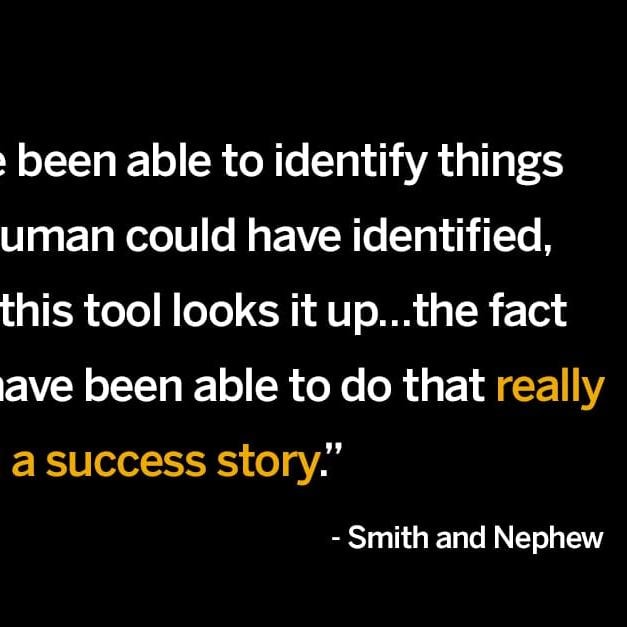Employee Experience
How Prioritizing Employee Satisfaction Helped A Company Scale Global Compliance and Thrive Amidst the Pandemic and Beyond
Transformation of a travel and expense program served as a starting point for simplification in other areas of the organization, for medical device company, Smith & Nephew. Smith & Nephew’s choice to prioritize employee satisfaction allowed it to keep humans central to the implementation of artificial intelligence-aided technology, which has allowed operations and employees to thrive amidst the pandemic and beyond.
Listen in to the empowering and candid conversation between Marchelle Klippenstein, VP of customer improvement for SAP Concur, and Jorge Monge, travel and expense lead for Smith & Nephew, as they talk through the key elements to a successful transformation and globalization across more than 40 countries.
Enjoy this episode on Apple, Amazon, Spotify, Listen Notes, Acast, or your favorite podcast player.
Global Business Service implementation (GBS) key learnings
Smith & Nephew successfully established Global Business Services (GBS), a centralized operations delivery model, by creating a common language around metrics, analytics, and KPIs. When spanning more than 40 countries, this was no small feat. However, its CEO-sponsored priority of employees helped the company to get it right. “Everything starts with culture,” shares Monge. “Once you have created something that actually makes sense and resonates with everyone and there is a common understanding, you can start really working across the lines of compliance and having…major decision makers and stakeholders understanding what compliance changes ha[ve] to be understood and applied, you can have a successful program and model taking shape globally.” Monge candidly shared that they didn’t get this right the first time. His two key learnings were:
- “Do not assume customer needs–there has to be a consistent feedback loop…We went through two extensive transformations with T&E, which were CEO-sponsored, and what we thought would’ve solved the T&E issue didn’t….We got it wrong the first time, in all candor. We were thinking simplifying this or that would increase user effectiveness and experience and it really [didn't].
- It’s very important to focus on creating partnerships and establishing yourself as a real partner with your key stakeholders…really conveying a message of common benefit.”
Because SAP Concur is an industry leader and was already supporting operations well in some countries for Smith & Nephew, they were able to implement Global Business Services across their organization. “At the end of the day, this is how you tackle risks and at the same time is a tool that allows you to increase user experience and improve it in a significant way.”
Human-centered technology: Early adoption of artificial intelligence (AI)
One of the risky moves Smith & Nephew made was to be an early adopter of AI, and it brought them great success. “When deciding and modelling, you have to make sure that it is something relevant as time passes,” shares Monge. “You have to think maybe five to ten years ahead. So we were risky–we were really taking this risk of deploying AI for the first time. I think that we were one of the first Concur Detect users and the fact that we took that chance has proven to be a really good investment. We have received good feedback and our process is very mature because of it.” While he couldn’t share specific numbers, Monge told us that auditing processes are now seamless at Smith & Nephew. “We have been able to identify things that no human could have identified, because this tool looks it up…the fact that we have been able to do that really has been a success story.”
Recovery and future-scaping: More human, more simple
As the conversation between Monge and Klippenstein closed, the industry leaders shared their thoughts on the coming years of recovery from the pandemic.
“The global situation is going to change how people travel,” shares Klippenstein. “Recovery is going to be top of mind for everyone and a global camaraderie around that. COVID-19 did not just impact one country or just a single population...and I think that our programs that we manage, and our customers…are going to have to have that mindset. We’re going to have to think about what’s best for our people, what’s best for the impact on the globe, [and how] we contribute to the recovery effort across the business. And, it seems weird to connect it to T&E, but we’re mobilizing employees–that’s what this solution does–to do their job and contribute to the revenue of the business and the process of the business.”
Since Smith & Nephew was able to centralize and streamline its travel and expense program as a model for other areas of innovation in the organization, Klippenstein’s hopeful future-scaping is pleasantly hopeful. “To me, the next five years look like a lot of control around dollars and cents and making sure it makes sense to spend that money. It’s also going to be about protecting employees and protecting people. We’ve got to bring a human element back into this. Great process streamlined to the fullest and all the buy-in in the world don't change the fact that you still have to protect the person,” continues Klippenstein. As we progress into 2021, Smith & Nephew’s story is a hopeful indicator of successful recovery and innovation across the globe.
“More human, more flexible, and we’re going to need technologies that are going to help with that flexibility…There’s no time to waste…this is a feeder to other simplifications across the organization and it’s an example of what’s possible,” shares Klippenstein.
Learn about the Smith & Nephew innovation story:
Part 1: How Smith & Nephew struck a balance between employee experience and compliance
Part 2: How Smith & Nephew increased spend accuracy
Part 3: How Smith & Nephew streamlined executive spend management decisions
